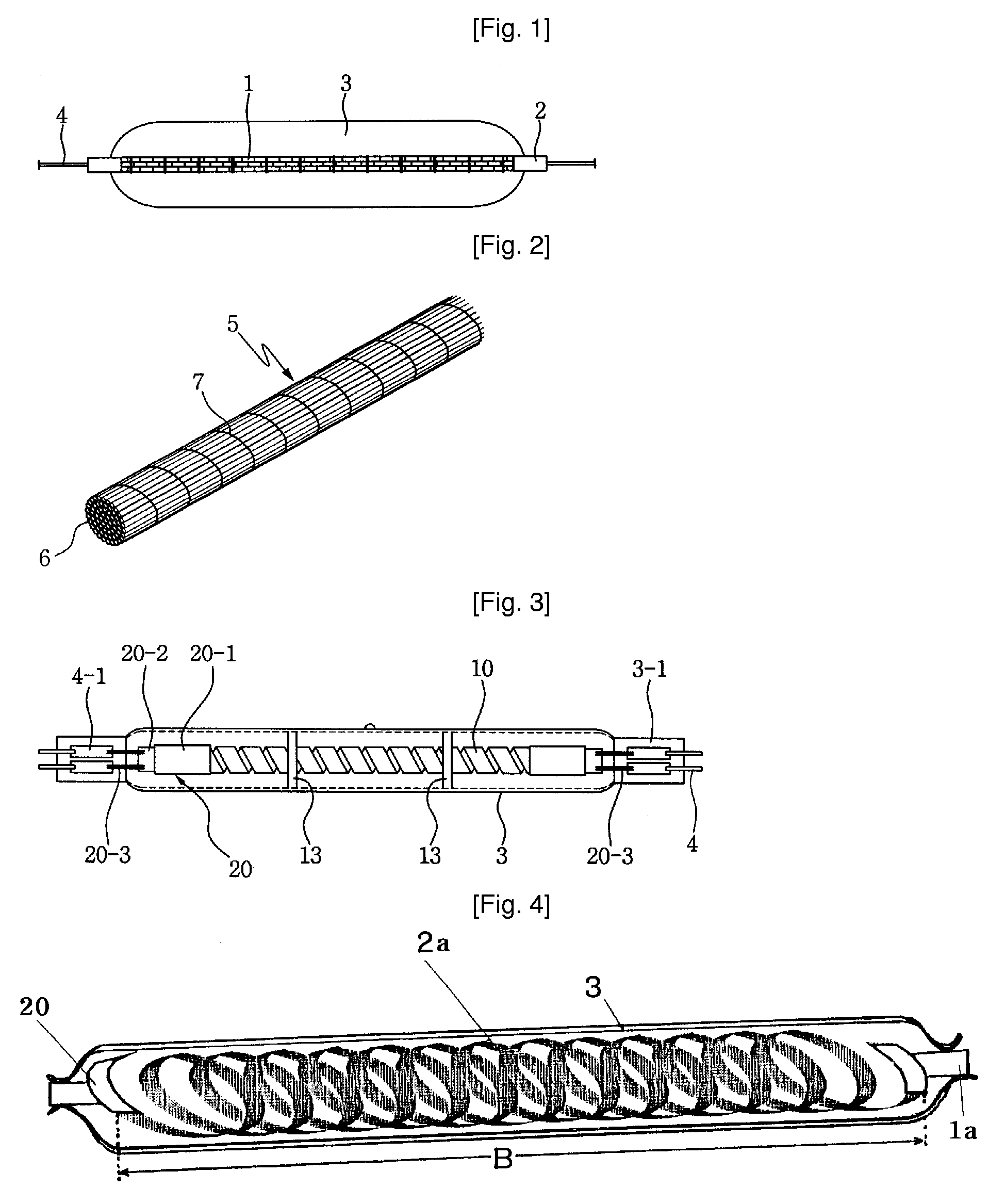Method for Manufacturing Pipe-Type Woven Carbon Fibers and Carbon Fiber Heating Lamp Using The Pipe-Type Woven Carbon Fibers
a technology of woven carbon fibers and heating lamps, which is applied in the field of carbon fiber heating lamps, can solve the problems of easy deformation of filaments, easy damage of filaments, and low durability of lamps, and achieve the effects of easy adjustment of resistance values, increased carbon fiber bundles, and high durability
- Summary
- Abstract
- Description
- Claims
- Application Information
AI Technical Summary
Benefits of technology
Problems solved by technology
Method used
Image
Examples
Embodiment Construction
[0039]Hereinafter, the preferred embodiments of the present invention will be described in detail with reference to the accompanying drawings.
[0040]FIG. 6 is a plan view of the present invention, FIG. 7 is a sectional view of a support terminal, FIG. 8 is an enlarged sectional view taken along line A-A of FIG. 6, and FIG. 9 is an enlarged sectional view showing another example of FIG. 6. A heating element comprises a carbon fiber pipe 30 which has a cylindrical shape formed by twisting several strands of carbon fibers. Support terminals 20 for conducting electricity are provided on the opposite ends of the carbon fiber pipe 30. Each support terminal 20 is secured via a heat-resistant intermediate terminal 20-3 to a corresponding electrode piece 4-1 which is secured to an outer lead wire 4 in such a way to conduct electricity. In this case, each of the intermediate terminal 20-3 and electrode piece 4-1 may be preferably made of molybdenum having superior heat resistance.
[0041]Referen...
PUM
| Property | Measurement | Unit |
|---|---|---|
| temperature | aaaaa | aaaaa |
| resistance | aaaaa | aaaaa |
| length | aaaaa | aaaaa |
Abstract
Description
Claims
Application Information
 Login to View More
Login to View More - R&D
- Intellectual Property
- Life Sciences
- Materials
- Tech Scout
- Unparalleled Data Quality
- Higher Quality Content
- 60% Fewer Hallucinations
Browse by: Latest US Patents, China's latest patents, Technical Efficacy Thesaurus, Application Domain, Technology Topic, Popular Technical Reports.
© 2025 PatSnap. All rights reserved.Legal|Privacy policy|Modern Slavery Act Transparency Statement|Sitemap|About US| Contact US: help@patsnap.com



